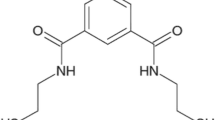Abstract
Minamata disease that occurred in southern Kyushu and Niigata prefecture in Japan was caused by ingesting seafood that is contaminated by methylmercury discharged from factories. This is a world-renowned pollution disease. Minamata disease is judged from the symptoms peculiar to mercury poisoning. However, it is known that mercury poisoning causes other disorders even at low concentrations of exposure, especially in fetal exposure. Those who are not certified as Minamata disease patients is widely rescued if they have eaten seafood in the area and have some kind of disability. In this chapter, we will discuss the concept of the precautionary principle and its scope of application through the case of Minamata disease. The key concepts are benchmark dose (BMD) and its lower limit (BMDL). When a person’s symptoms occur at a certain frequency, say 5%, without mercury intake, with a higher probability of a certain exposure of mercury intake, say 10%, this exposure level is called BMD. BMD is used for tolerable intake. The relationship between this exposure and the incidence of symptoms is estimated by a dose–response relationship, but the estimation includes uncertainty. Based on the precautionary principle, the fifth percentile of BMD is calculated. This is called BMDL. It is used as a recommendation based on the precautionary principle as a guide to refrain from mercury intake. In Japan, this is used as the standard for people who are eligible for relief from Minamata disease. In that case, 5% of people who are not actually exposed to mercury will be eligible for relief, and there will be less than 10% of true relief recipients due to mercury exposure.
Access this chapter
Tax calculation will be finalised at checkout
Purchases are for personal use only
Similar content being viewed by others
References
Budtz-Jørgensen E, Grandjean P, Keiding N, White RF, Weihe P (2000) Benchmark dose calculations of methylmercury-associated neurobehavioural deficits. Toxicol Lett 112-113:193–199
Crump KS, Kjellstrom T, Shipp AM, Silvers A, Stewart A (1998) Influence of prenatal mercury exposure upon scholastic and psychological test performance: benchmark analysis of a New Zealand cohort. Risk Anal 18:701–713
Crump KS, Van Landingham C, Shamlaye C et al (2000) Benchmark concentrations for methylmercury obtained from the Seychelles child development study. Environ Health Perspect 108(3):257–263. https://doi.org/10.1289/ehp.00108257
EFSA CONTAM Panel (2012) Scientific opinion on the risk for public health related to the presence of mercury and methylmercury in food. EFSA J 10:2985. https://doi.org/10.2903/j.efsa.2012.2985
FSCJ [Food Safety Commission, Japan] (2005) Food safety risk assessment related to methylmercury in seafood. https://www.fsc.go.jp/english/index.data/methylmercury_risk_assessment.pdf. Accessed 4 Oct 2020
Futatsuka M, Ueda A, Yasutake R, Nomura S (1982) Estimation of dietary intake of methyl mercury in Minamata district. Kumamoto Med J 35:23–33
Harada Y, Miyamoto Y, Nonaka I, Ohta S, Ninomiya T (1968) Electroencephalographic studies of Minamata disease in children. Dev Med Child Neurol 10:257–258
Harada M (1995) Minamata disease: Methylmercury poisoning in Japan caused by environmental pollution. Crit Rev Toxicol 25:1–24
Matsuda H (2003) Challenges posed by the precautionary principle and accountability in ecological risk assessment. Environmetrics 14:245–254
Nakagawa R, Yumita Y, Hiromoto M (1997) Total mercury intake from fish and shellfish by Japanese people. Chemosphere 35(12):2909–2913. https://doi.org/10.1016/s0045-6535(97)00351-2
Nakanishi J, Masunaga S, Matsuda H (eds) (2003) Calculating environmental risks. Iwanami-Shoten, Tokyo, 246 pp
NRC [National Research Council] (2000) Toxicological effects of methylmercury. The National Academies Press, Washington, DC. https://doi.org/10.17226/9899
Takaoka S (2016) Minamata disease diagnosis general remarks. (in Japanese) https://www.kyouritsu-cl.com/up_file/1912/td04_file1_10142331.pdf. Accessed 4 Oct 2020
Tsurumi Y (2006) Minamata’s Moyainaoshi Movement and Sustainable Development: Recovery from Division, Chuo Univ. http://www.nier.go.jp/hidekim/ESD/Minamata.pdf. Accessed 4 Oct 2020
WHO, IPCS [World Health Organization, International Programme on Chemical Safety] (1990) Methylmercury/published under the joint sponsorship of the United Nations Environment Programme, the International Labour Organisation, and the World Health Organization. World Health Organization. https://apps.who.int/iris/handle/10665/38082. Accessed 4 Oct 2020
Yorifuji T, Tsuda T, Harada M (2013) Minamata disease: a challenge for democracy and justice. Late lessons from early warnings: science, precaution, innovation. European Environment Agency, Denmark, pp 124–152
Yorifuji T, Tsuda T, Takao S, Suzuki E, Harada M (2009) Total mercury content in hair and neurologic signs - historic data from minamata. Epidemiol 20:188–193
Zhang Y, Nakai S, Masunaga S (2009) An exposure assessment of methyl mercury via fish consumption for the Japanese population. Risk Anal 29:1281–1291
Acknowledgments
I am grateful to Dr. Zhang Ying, Dr. Makoto Futatsuka, Dr. Noriyuki Hachiya, Dr. Ikuo Hirata, Dr. Shigeki Masunaga, Dr. Junko Nakanishi, Dr. Shinya Ueno for valuable information. This chapter is partly supported by the Ministry of the Environment for the grant for “Comprehensive research on health effects of heavy metals.”
Author information
Authors and Affiliations
Editor information
Editors and Affiliations
Rights and permissions
Copyright information
© 2021 The Author(s), under exclusive license to Springer Nature Singapore Pte Ltd.
About this chapter
Cite this chapter
Matsuda, H., Ueno, S. (2021). How to Determine the Relief Target for Minamata Disease. In: Matsuda, H. (eds) Ecological Risk Management. Ecological Research Monographs. Springer, Singapore. https://doi.org/10.1007/978-981-33-6934-4_2
Download citation
DOI: https://doi.org/10.1007/978-981-33-6934-4_2
Published:
Publisher Name: Springer, Singapore
Print ISBN: 978-981-33-6933-7
Online ISBN: 978-981-33-6934-4
eBook Packages: Biomedical and Life SciencesBiomedical and Life Sciences (R0)




